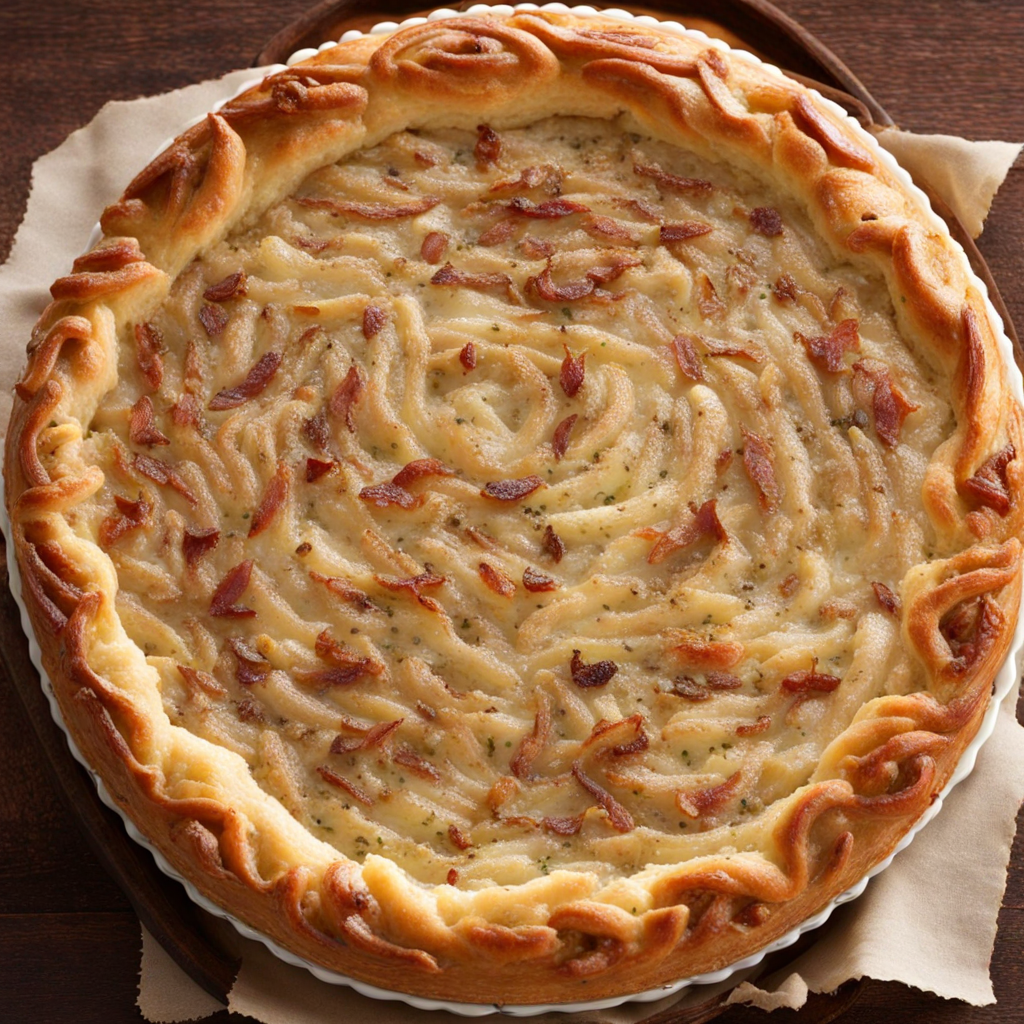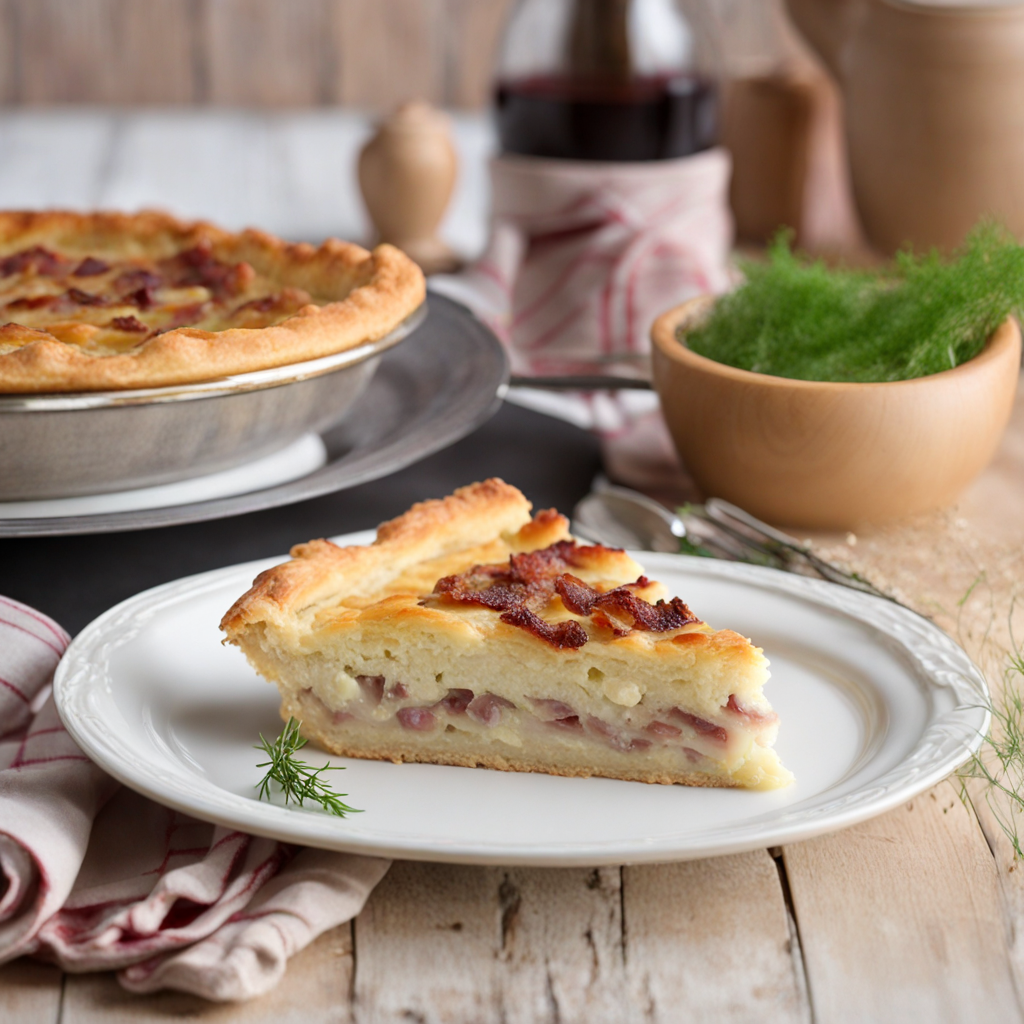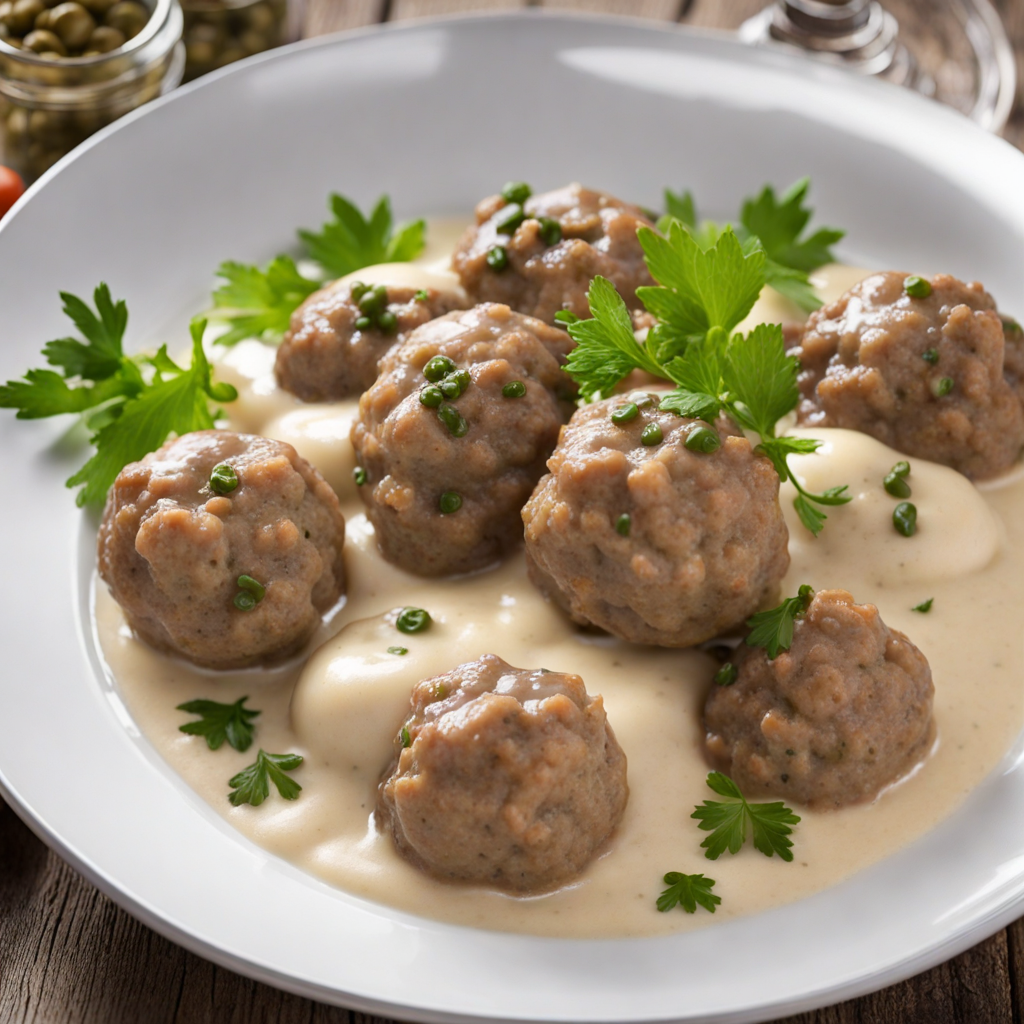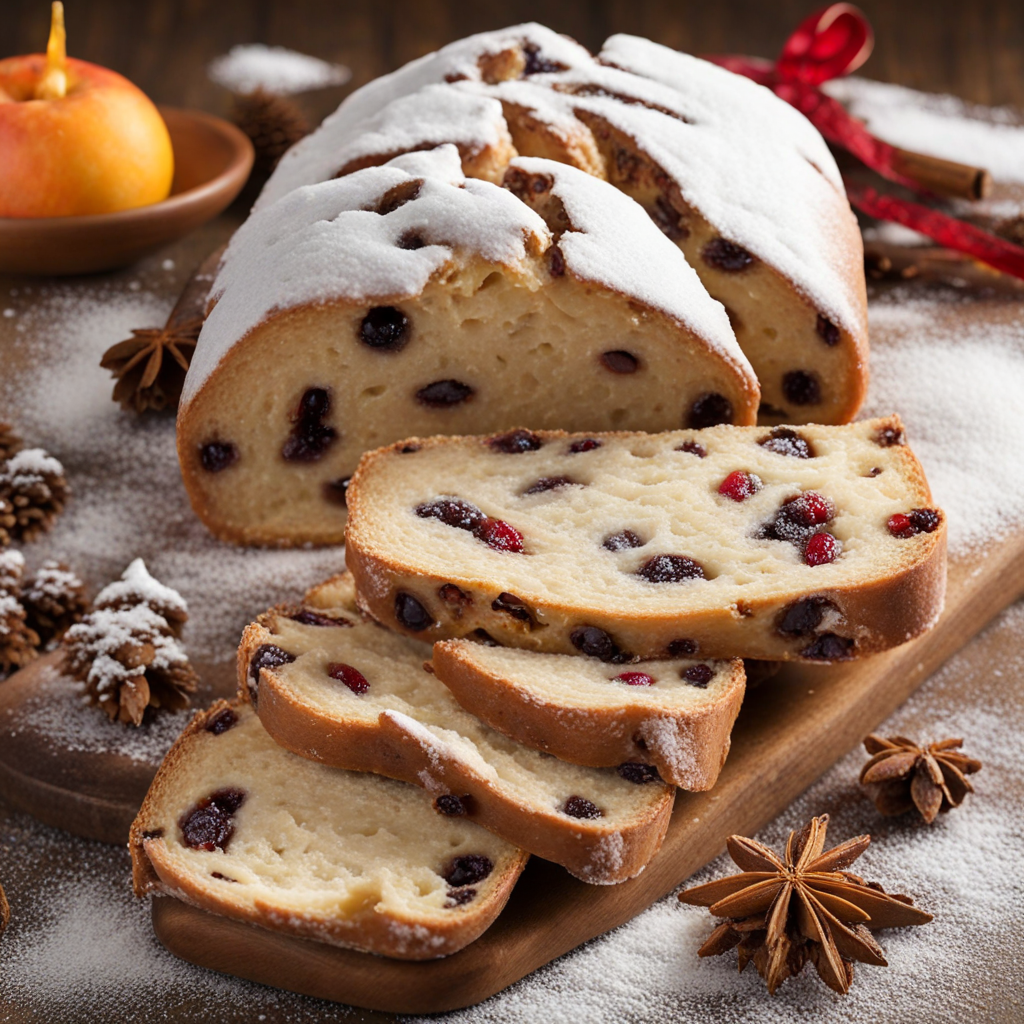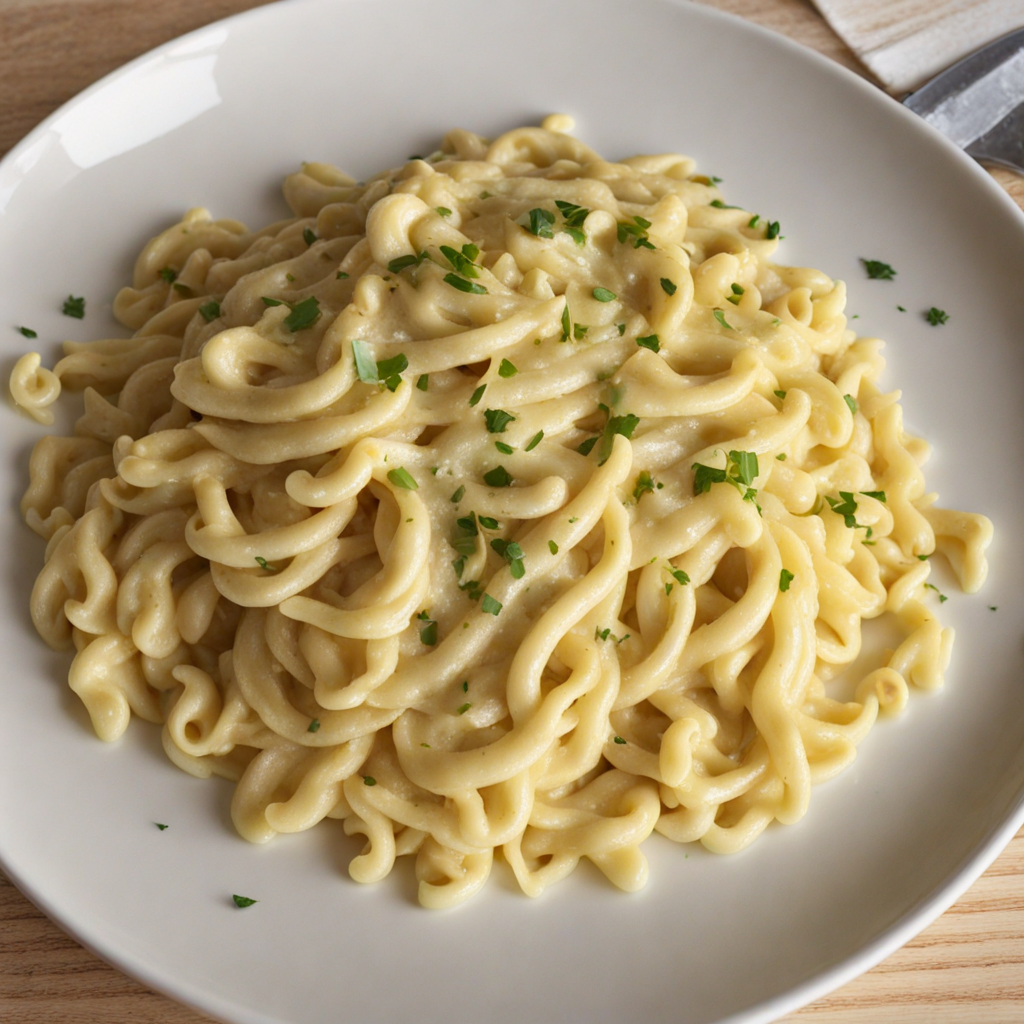Zwiebelkuchen
Zwiebelkuchen, often translated as "onion cake," is a savory German dish that tantalizes the taste buds with its unique blend of flavors and textures. This delightful dish typically features a buttery, flaky crust that serves as a perfect canvas for its rich filling. The star ingredient, caramelized onions, brings a sweet and savory depth, while the addition of crispy bacon or ham adds a smoky, savory punch. Some variations may include creamy sour cream or eggs, creating a luscious, custard-like texture that binds the ingredients beautifully, making each bite a comforting experience. The aroma of Zwiebelkuchen wafting from the oven is simply irresistible. As the onions cook down, they develop a golden hue and an intense sweetness that balances perfectly with the slight saltiness of the bacon. The crust, golden and crisp, provides a satisfying crunch that contrasts wonderfully with the soft filling. Traditionally enjoyed in the fall, particularly during wine harvest festivals in regions like Franconia, this dish pairs beautifully with a glass of local white wine, enhancing the flavors and creating a delightful culinary experience. Zwiebelkuchen is not just a dish; it's a celebration of seasonal ingredients and German culinary tradition. Whether served as a hearty main course or a delightful appetizer, it showcases the beauty of simplicity in cooking. Each slice offers a warm embrace of flavors, making it a perfect dish for gatherings with family and friends. With its comforting aroma and satisfying taste, Zwiebelkuchen invites food lovers to explore the heart of German cuisine, providing a memorable taste that lingers long after the meal is over.
How It Became This Dish
The History of Zwiebelkuchen: Germany's Beloved Onion Cake Zwiebelkuchen, or onion cake, is a dish steeped in history, tradition, and regional pride in Germany. This savory pie, primarily hailing from the southwestern regions of the country, notably Swabia, the Palatinate, and Franconia, embodies the rustic charm of German cuisine. Its roots run deep, intertwining with local customs, seasonal harvests, and social gatherings, making it much more than just a meal—it's a cultural artifact. #### Origins of Zwiebelkuchen The origins of Zwiebelkuchen can be traced back to the medieval period, although the precise date of its inception remains elusive. The dish is thought to have emerged in regions where onions flourished and were a staple in the local diet. As early as the 14th century, onions were a common ingredient in European cooking due to their long shelf life and ability to add flavor to various dishes. In Germany, the abundance of onions during the harvest season made them a popular choice for peasant food, leading to the creation of hearty, satisfying meals. The name "Zwiebelkuchen" itself translates to "onion cake," but this is somewhat misleading. The dish is not a cake in the traditional sense. Instead, it resembles a savory tart or quiche, featuring a thin crust filled with a rich mixture of onions, cream, eggs, and often bacon or ham, seasoned with herbs and spices. The combination of these ingredients results in a dish that is both comforting and flavorful, embodying the essence of German home cooking. #### Cultural Significance Zwiebelkuchen is deeply embedded in the cultural fabric of German life, particularly in the fall when the grape harvest is celebrated. Traditionally, it is enjoyed during Federweisser season, the time of year when young, partially fermented wine (Federweisser) is first available. The pairing of Zwiebelkuchen and Federweisser has become a cherished autumn custom, particularly in the wine-growing regions of the Pfalz and Baden. This seasonal festivity celebrates the bounty of the harvest, bringing communities together for enjoyment, conversation, and camaraderie. The role of Zwiebelkuchen extends beyond mere sustenance; it serves as a symbol of home and hospitality. In many households, the dish is prepared for family gatherings, harvest festivals, and communal celebrations. The act of making Zwiebelkuchen can be a communal activity, with families and friends gathering to chop onions, roll out dough, and share stories as they cook together. This practice reinforces social bonds and fosters a sense of belonging, making Zwiebelkuchen a dish of both nourishment and connection. #### Development Over Time As German culinary practices evolved, so too did Zwiebelkuchen. The basic recipe remained relatively simple, but regional variations began to emerge, reflecting local tastes and available ingredients. In the Swabian region, for instance, Zwiebelkuchen may include a thicker crust and a richer filling, while the Palatinate version often features a more delicate pastry, emphasizing the onions' sweetness. The introduction of new ingredients over the centuries has also influenced the evolution of Zwiebelkuchen. As trade routes expanded and culinary practices mingled, spices and flavorings from distant lands began to find their way into German kitchens. For example, the addition of caraway seeds or nutmeg can be traced back to these interactions, giving the dish a nuanced flavor profile that varies from region to region. In the 19th century, Zwiebelkuchen began to gain recognition beyond local customs, becoming a staple in German bakeries and restaurants. With the rise of industrialization and urbanization, more people moved to cities, and traditional dishes like Zwiebelkuchen became a way to maintain a connection to rural roots. Bakeries began to sell Zwiebelkuchen year-round, making it accessible to a broader audience. The 20th century saw the popularity of Zwiebelkuchen spread beyond Germany's borders, particularly among German immigrants in America. As these communities settled and established their own cultural identities, they brought their culinary traditions with them. Zwiebelkuchen found a new home in the United States, particularly in areas with significant German populations, such as Wisconsin and Texas. Here, it was adapted to local tastes and ingredients, leading to variations that continue to reflect the dish’s versatility. #### Modern Zwiebelkuchen In contemporary Germany, Zwiebelkuchen maintains its status as a beloved dish, often featured at festivals, markets, and family gatherings. It is commonly served with a side of apple sauce or a simple salad, offering a delightful contrast to the rich flavors of the onion filling. The dish has also found its way onto the menus of modern German restaurants, where chefs often experiment with gourmet interpretations, incorporating ingredients such as goat cheese, herbs, or seasonal vegetables. Moreover, Zwiebelkuchen has transcended its traditional boundaries, becoming a symbol of German cuisine that resonates with people around the world. Food enthusiasts and chefs alike celebrate its rustic origins while embracing its adaptability to new culinary contexts. The dish's enduring appeal lies in its simplicity, heartiness, and the comfort it brings, reflecting the values of German hospitality and home cooking. #### Conclusion Zwiebelkuchen is more than just a dish; it is a testament to the agricultural practices, social customs, and culinary evolution of Germany. From its humble beginnings as a peasant food to its modern iterations as a cherished comfort food, Zwiebelkuchen embodies the spirit of togetherness and celebration. Whether enjoyed at a harvest festival with Federweisser or shared among friends and family, Zwiebelkuchen continues to evoke a sense of nostalgia and warmth, reminding us of the timeless connection between food, culture, and community. As it weaves its way through history, Zwiebelkuchen stands as a delicious symbol of German heritage, inviting people to gather, savor, and share in the rich tapestry of culinary traditions.
You may like
Discover local flavors from Germany


